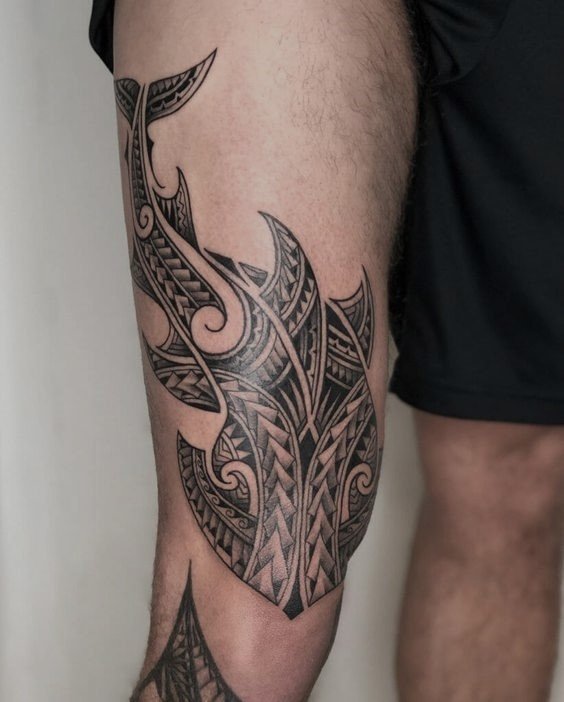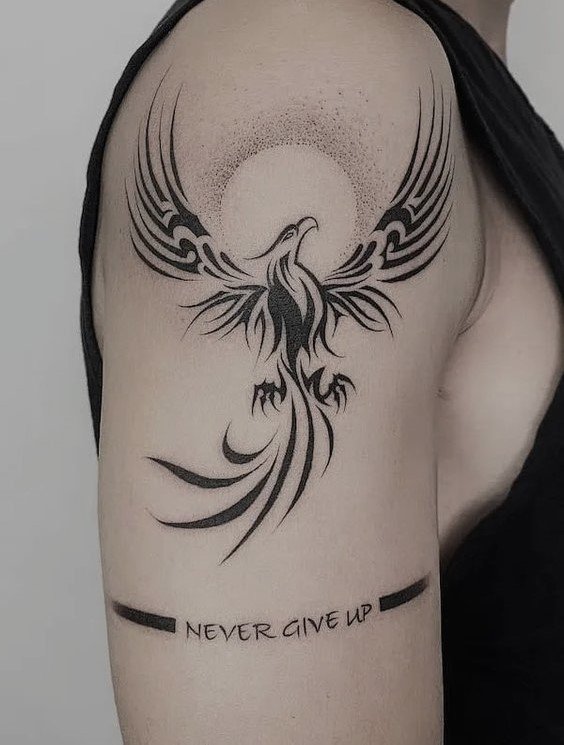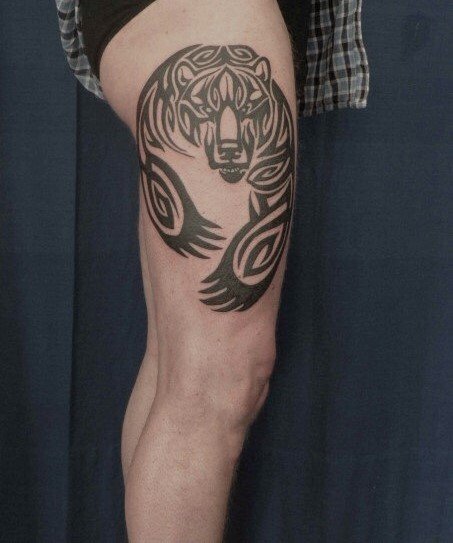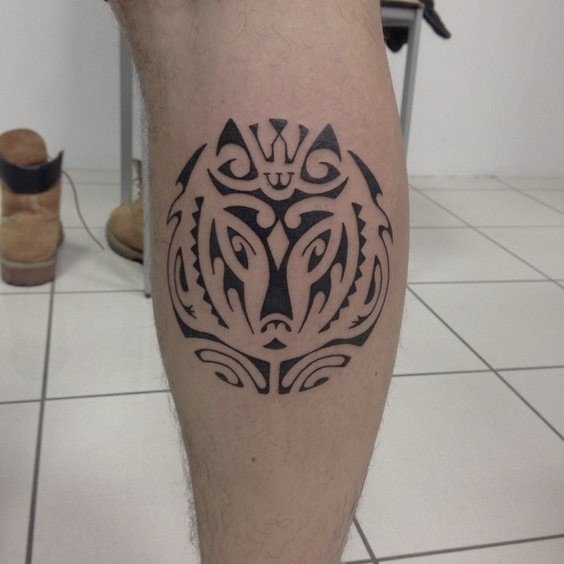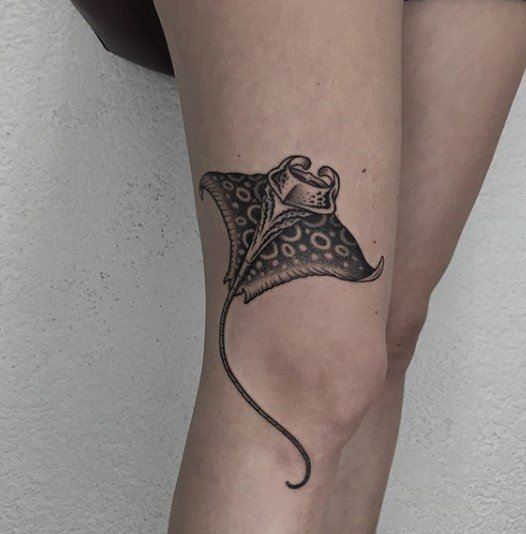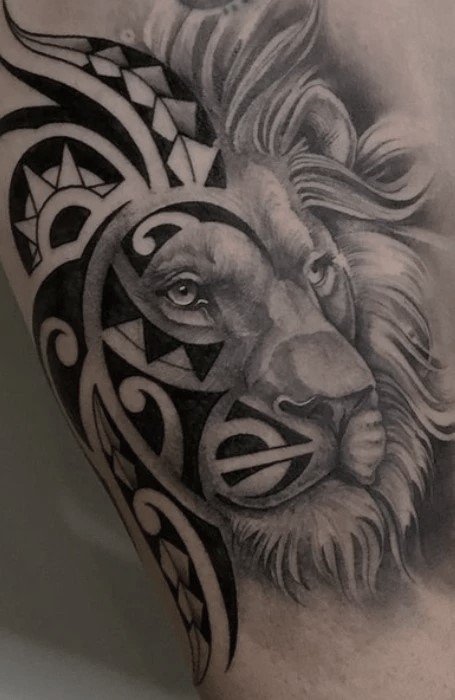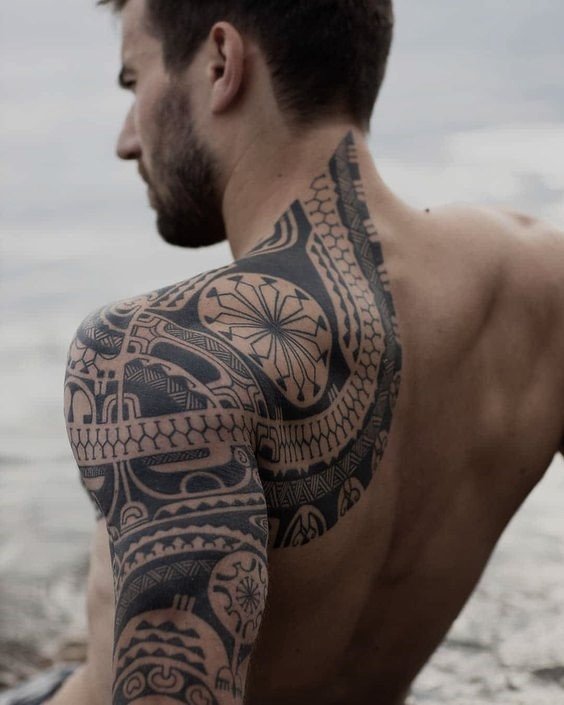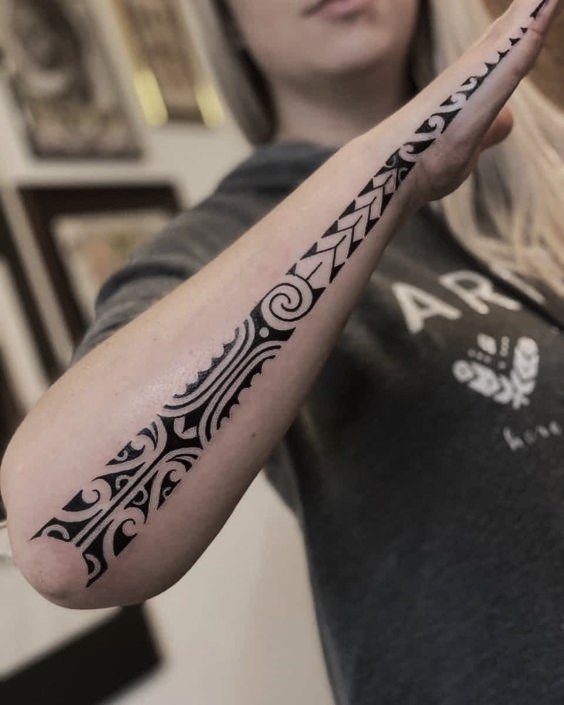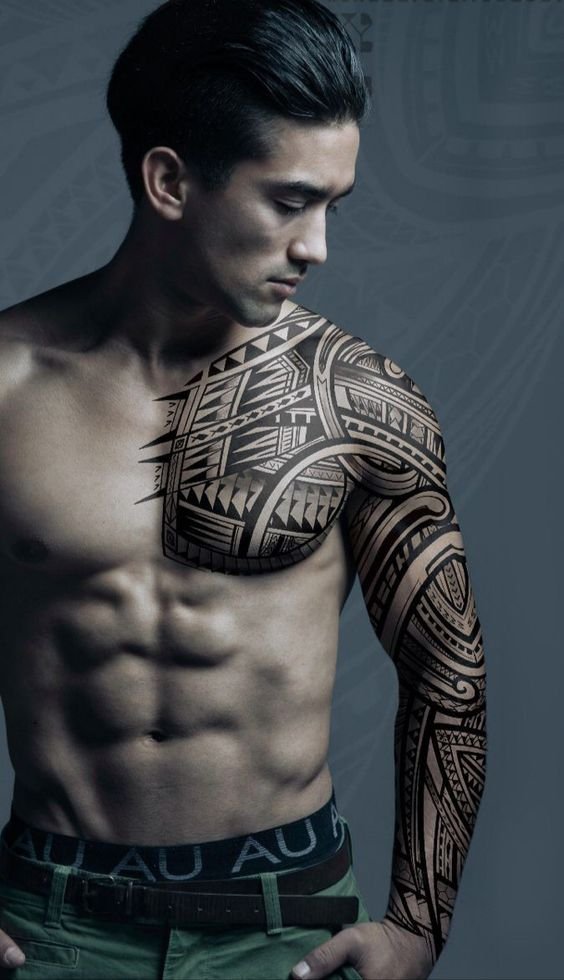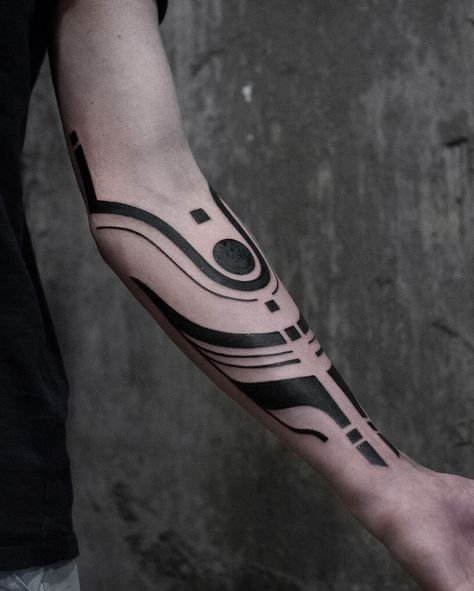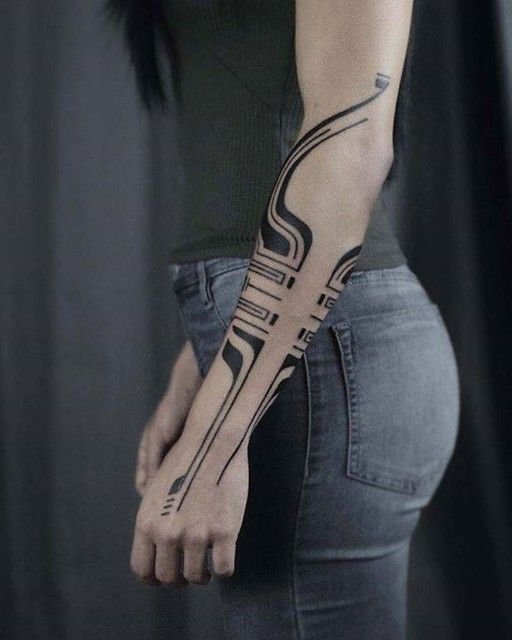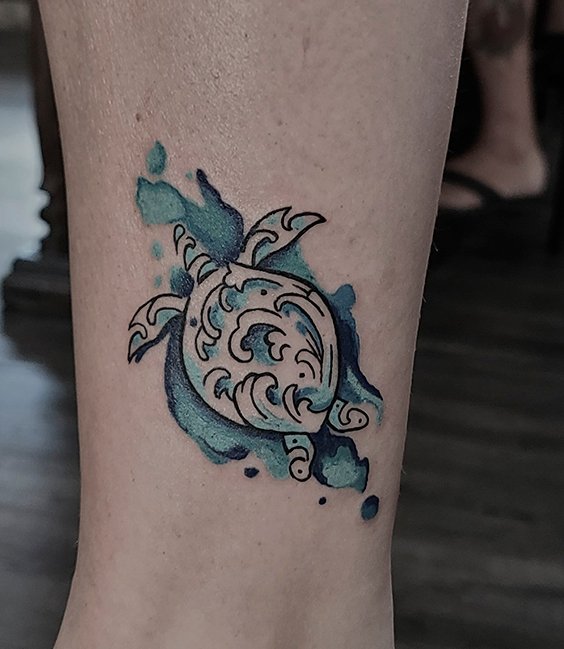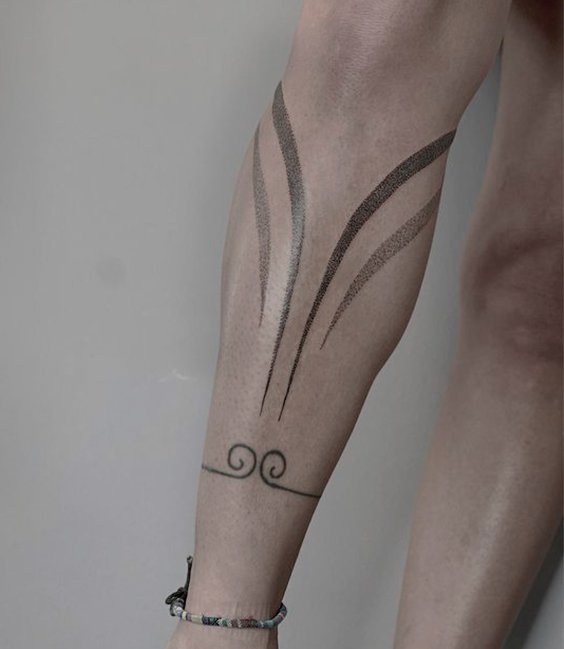Tribal tattoos: here tradition is intertwined with modernity
Tattoo art, also known as tribal tattoos, has a rich and long tradition. It strikes with the grace of abstract and geometric elements.
The sketches often contain details associated with cultural symbols, traditions of certain ethnic groups. Traditionally, such tattoos were used as a symbol of the individuality of the communities of that time.
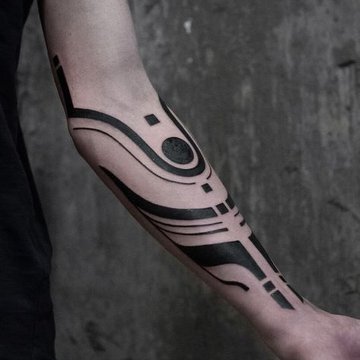
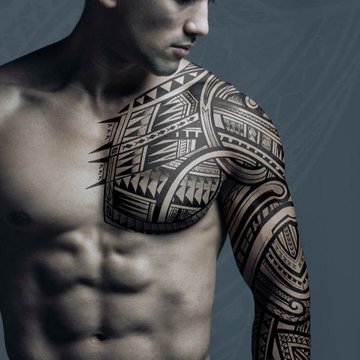
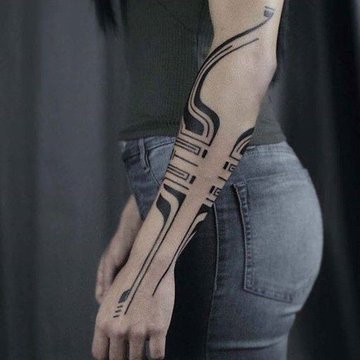
History
Archaeologists managed to find evidence of the existence of tattoos, which were created about 40 thousand years ago.
The oldest of all tribal tattoos that have survived to this day is the body image on the body of the mummified man. His age is estimated at 5 thousand years. Found in 1991, the body was covered with primitive body images of horizontal and vertical lines.
A study published in the International Journal of Paleopathology explains: All tattoos coincide with the traditions of acupuncture. The body images were located at key points according to the direction of this oriental medicine. This leads to the logical assumption that the first tattoos could be used to treat pain or disease.
In general, examples of tribal images have been found on many mummies from different parts of the globe. They also date back to different ages. Tattoos were found on mummies in Egypt, the oldest of which reflect a pattern of simple dots around the lower abdomen. However, a mummified body with more complex ornaments was recently found. It featured lotus flowers and the eye of Wajet, also known as the Eye of Horus. According to archaeologists, these drawings carry ritual and even sacred symbolism.
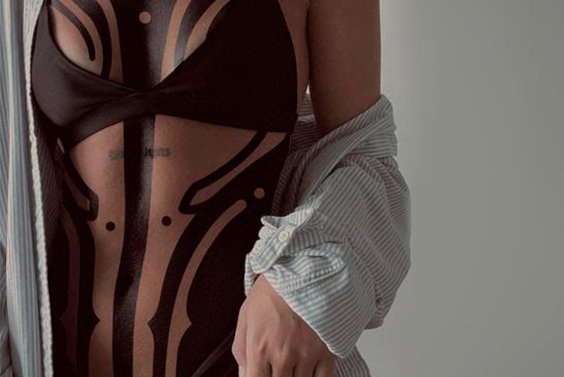

Tribal tattoos and modernity
Today, the main styles of tribal tattoos are a fusion of the traditional influences of the peoples of Samoa, Polynesia and Maori.
In these cultures, tattoos served as identifiers for their carriers. They emphasized belonging to a tribe, demonstrated social status, and were sometimes used in religious and medical rituals.
In addition, tribal tattoos denoted not only social status, but also family ties, significant symbols, clan membership, personal values, and human philosophy.
The main elements of the tattoo are black dots, lines, geometric shapes and repeating patterns. Modern tattoo artists combine elements of different cultures and combine them with new techniques and aesthetics, creating a unique mixture of traditions and modern art.
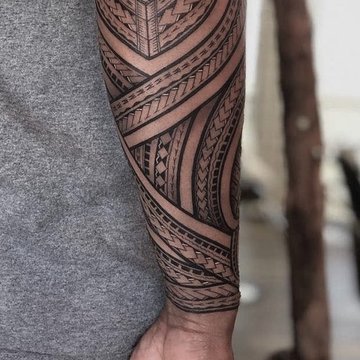
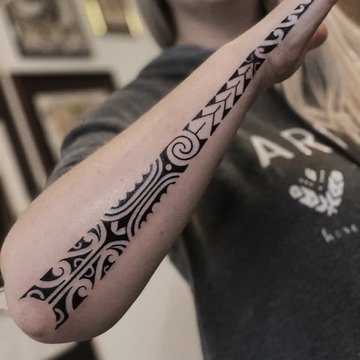
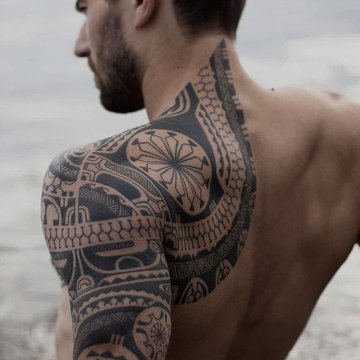
Tribal tattoos have also become popular as elements of larger and more complex compositions.
Many people decide to combine tribal designs with other styles, such as:
- Realism.
- Watercolor.
- Biomechanical tattoos.
- Trash polka.
- Linework.
- Dot-work.
- Handpoke.
The combination of these directions allows you to create visually stunning and personalized works of body art.
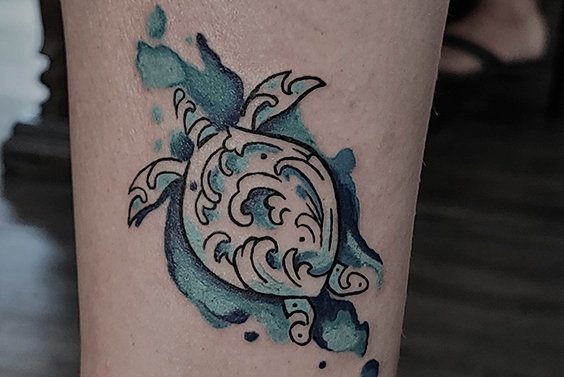
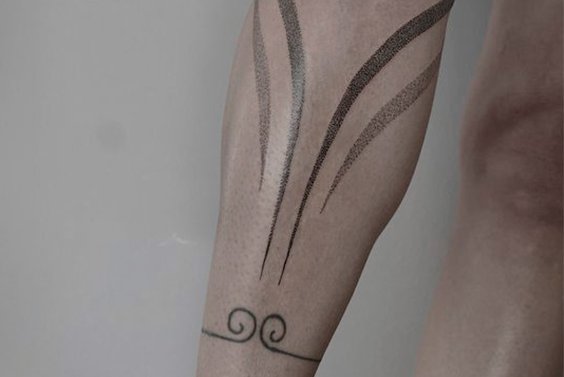
Common images
and their symbolism
The shapes, images and figures used in tribal tattoos often reflected the life and environment of the time, including animals.
These images were intended to tell the story of the owner.
For example, warriors decorated themselves with tattoos depicting predators and dangerous natural elements, symbolizing their strength, skill and readiness for battle. Coastal cultures often used drawings symbolizing the sea or ocean.
The meaning and symbolism of common images became the basis for modern interpretations. Consider them in more detail.
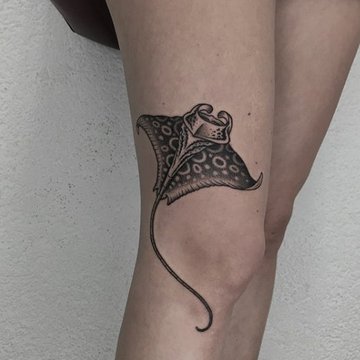
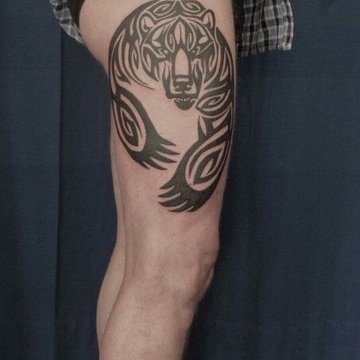
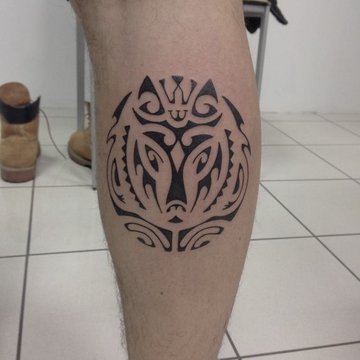
Animals and Wildlife
Sketches of tribal tattoos often include images of animals.
Here are some examples:
- The eagle symbolizes power and holiness. It can express fortitude and protection from dangers.
- Bear is a prototype of strength and wisdom, the ability to overcome any problems and challenges.
- The snake is a symbol of rebirth and life cycle.
- Lion is an image of courage and leadership.
- The wolf symbolizes devotion to the community and beloved ones.
- Fish is an image of spirituality and depth of our Self.
The meaning of these symbols may vary depending on the culture. So, it is worth getting acquainted with the traditions of the chosen tribe for a better understanding of your tattoo.
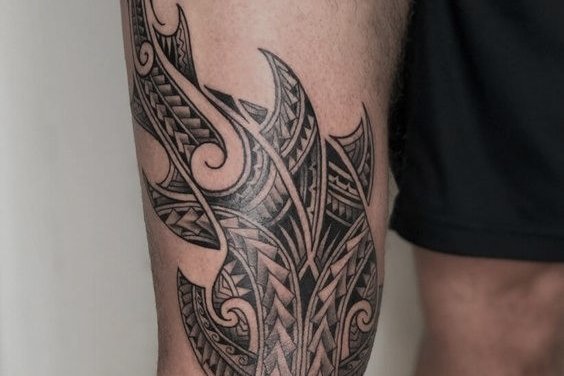
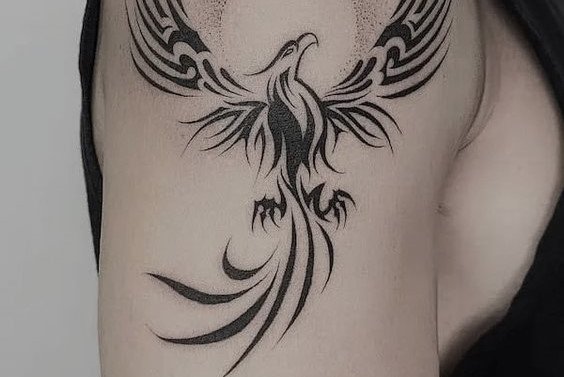
Other traditional elements are:
- The sun, symbolizing life and energy in its pure form. It may also hint at themes of enlightenment and spiritual awakening.
- The moon has long been a symbol of femininity, intuition, magic, cyclical life and death. According to ancient tribal beliefs, this body image embodies a connection with the divine and the common subconscious.
- Spirals in tribal tattoo designs represent eternity, repetition of events, phenomena and matter, and personal growth. They also talk about the relationship of all things in the universe.
- Arrows symbolize direction, focus of attention and protection. These elements embody purposefulness and the ability to overcome any obstacles.
- Triangles are a symbol of balance, tranquility and harmony with oneself. They embody the union of body and spirit, as well as the elements of fire, earth and water.
- Māori Koru is a spiral figure found in tribal tattoos of the Māori peoples. It symbolizes new beginnings, growth and rebirth.
- Celtic knots are complex and intertwined images in tribal tattoos of the ancient Celts, which symbolize eternal love, unity and relationship with the world.
Tribal images on the body are not only the art of tattooing, but also the embodiment of history, a manifestation of ancient culture. Their roots go far back in time, but today this tradition finds a new life. The fusion of traditional elements with modern techniques and aesthetics allows you to create unique and impressive masterpieces of body art. Tribal tattoos not only express individuality, but also carry into the world of symbolism, where each image carries a deep meaning.


 Make a sketch in the AI VEAN TATTOO generator
Make a sketch in the AI VEAN TATTOO generator
